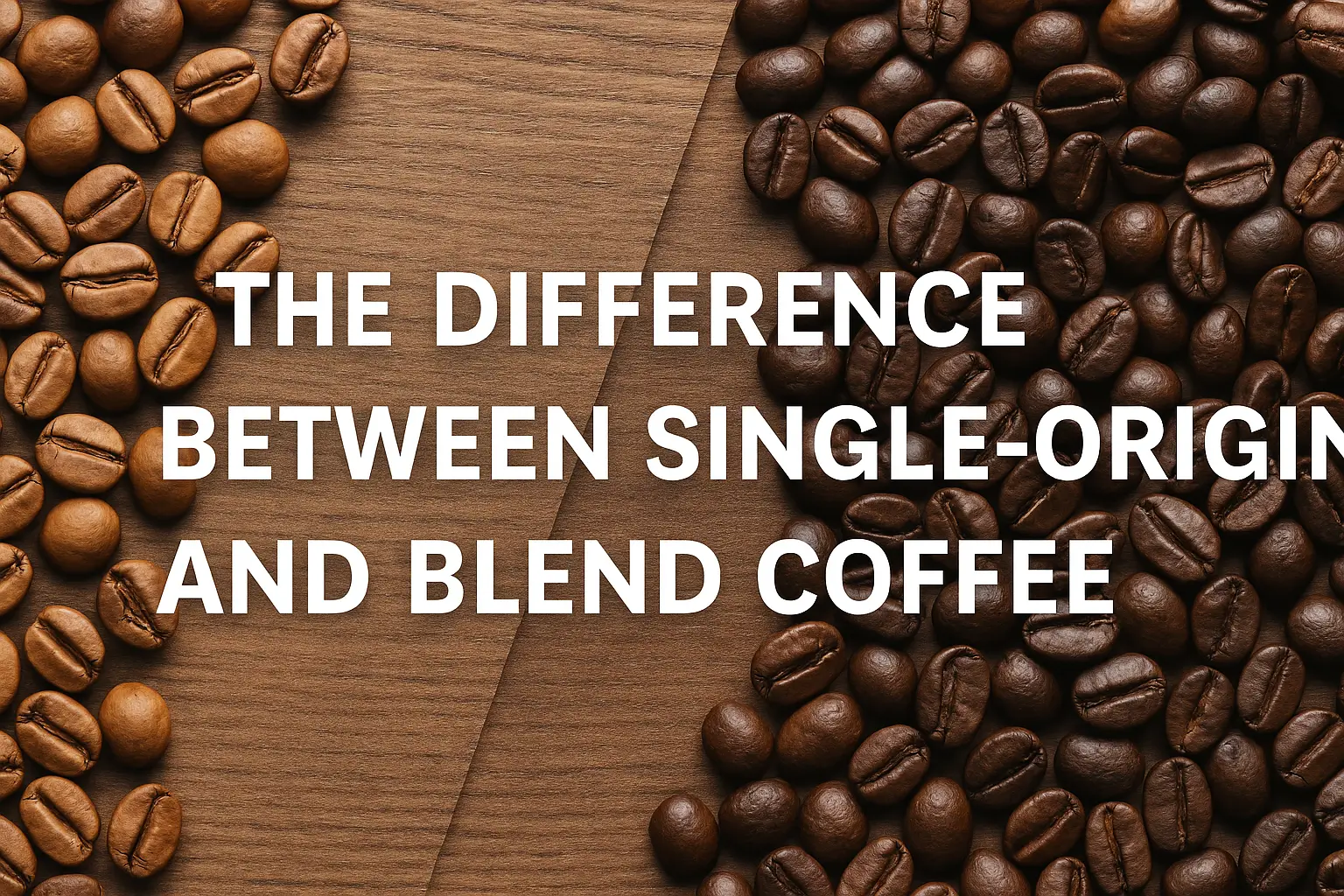When shopping for coffee, you’ve probably come across labels like “single-origin” or “house blend.” But what do these terms really mean? And how do they affect the flavor, quality, and experience of your cup?
In this article, we’ll break down the difference between single-origin and blend coffees, explore their advantages, and help you decide which one is right for your taste and brewing style.
What Is Single-Origin Coffee?
Single-origin coffee is made from beans that come from one specific location. This can be:
- A single country (e.g. Ethiopia)
- A single region (e.g. Yirgacheffe in Ethiopia)
- A single farm or cooperative (e.g. Finca El Injerto in Guatemala)
The main idea is traceability — knowing exactly where your coffee comes from and how it was grown.
Key Characteristics:
- Distinctive flavor profile
- Highlights the characteristics of the region
- Often seasonal and limited in availability
- Popular in specialty coffee shops and among enthusiasts
Flavor:
Single-origin coffees are often described as more complex, nuanced, or adventurous. You may notice:
- Floral and citrusy notes from Ethiopia
- Chocolate and nutty tones from Brazil
- Bright acidity and berry flavors from Kenya
These coffees are usually roasted lighter to preserve and showcase their unique flavors.
Best Brewing Methods:
- Pour-over
- AeroPress
- Cold brew
- Manual brewing in general (to enjoy the subtleties)
What Is a Coffee Blend?
A coffee blend is a mix of beans from two or more origins. The goal is to create a balanced, consistent, and complementary flavor profile.
Blends can include beans from:
- Different regions within one country
- Multiple countries or continents
- A mix of Arabica and Robusta (in some espresso blends)
Key Characteristics:
- More consistent flavor year-round
- Crafted to balance acidity, sweetness, and body
- Easier to control quality and cost
- Common in cafés and for espresso
Flavor:
Blends are designed for harmony and balance. They may not be as “exciting” or unique as single-origin coffees, but they are:
- Reliable
- Smooth
- Versatile with milk and sugar
Popular examples include house blends, breakfast blends, and espresso blends.
Best Brewing Methods:
- Espresso machine
- French press
- Automatic drip machine
Comparison Table
| Feature | Single-Origin Coffee | Coffee Blend |
|---|---|---|
| Origin | One specific location | Multiple origins |
| Flavor Profile | Unique, sometimes bold or bright | Balanced and consistent |
| Availability | Often seasonal or limited | Available year-round |
| Best For | Manual brewing, tasting the terroir | Espresso, milk-based drinks |
| Price | Usually higher | Often more affordable |
| Popular With | Coffee enthusiasts, specialty shops | Cafés, general consumers |
Why Choose Single-Origin?
- You enjoy complex flavors and subtle notes
- You want to explore different coffee-producing regions
- You care about traceability and origin stories
- You’re brewing manually and want the best experience
Why Choose a Blend?
- You want a consistent, smooth cup
- You like espresso drinks (like cappuccinos or lattes)
- You don’t want to think too much — just a good, reliable brew
- You’re looking for better value per cup
Can You Have the Best of Both Worlds?
Yes! Some roasters now offer “blended single-origins”, where beans from the same country or farm are processed differently and blended to enhance complexity.
Also, don’t forget: just because something is single-origin doesn’t mean it’s automatically better. Quality depends on:
- How the coffee is grown
- How it’s processed and roasted
- How you brew it
Final Thoughts: Follow Your Taste
Choosing between single-origin and blend comes down to what you like and how you brew. Want something adventurous, traceable, and region-specific? Go with single-origin. Prefer a smooth, predictable cup that works well with milk? Reach for a blend.
The beauty of coffee is in its diversity — and trying both is the best way to discover your perfect cup.
